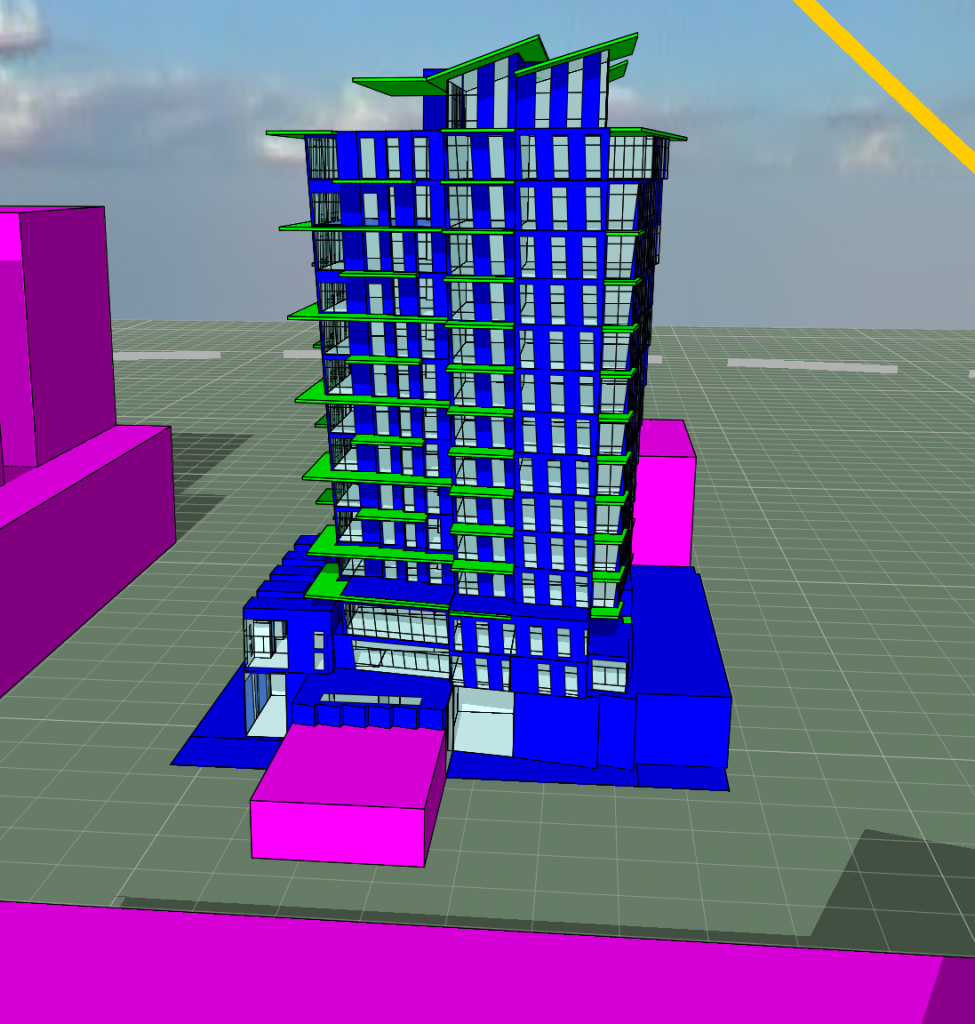Building Energy Modelling (BEM) is a versatile, multipurpose tool used in both new construction and existing buildings. Now mandatory for all new builds in many jurisdictions throughout Canada, energy modelling can help inform decision-making at the design-stage; show code compliance; achieve green building certification; and guide policy and code development as the world collectively seeks out new ways to reduce its carbon footprint.
“An energy model is a computer simulation of a building that takes into consideration the architectural geometry, building enclosure systems, mechanical and electrical systems,” explains Mohammad Fakoor, Senior Building Performance Engineer with RJC Engineers. “It can be used to simulate the thermal performance of a building in order to calculate the Thermal Energy Demand Intensity (TEDI), Total Energy Use Intensity (TEUI), and Greenhouse Gas Emission Intensity (GHGI).”
The simulation software works by enacting a mathematical model that provides an approximate representation of a building. It requires a vast amount of data input, as well as a qualified energy modeller to achieve optimal results.
Terry Bergen, Managing Principal at RJC Engineers’ Victoria office is a huge advocate of this technology, calling it “the most powerful design-assist tool available to a project team.” According to Bergen, a well-prepared energy model will account for the following factors:
– Building mass, shape and orientation;
– Neighbourhood effects of surrounding buildings;
– Building structure;
– Enclosure and façade performance;
– Mechanical and HVAC loads;
– Electrical loads and lighting intensity;
– Future climate loads.
When inputted correctly, the benefits delivered can be invaluable for building owners, designers and occupants alike. Projections can play a significant role in determining Energy Conservation Measures (ECMs), leading to reduced operating and maintenance costs over the life cycle of the building. They also lead to improved occupant thermal comfort and a lowered carbon footprint. In new buildings, design-assist iterations can help the design team determine the most suitable form of the building, and the impact of design choices on energy efficiency.

Getting reliable results
Although the end results may not represent the actual energy consumption of a building, the overall reliability of an energy model is largely dependent on the component information being as accurate and meaningful as possible. For example, Bergen points to the performance values of a building enclosure, stating that they should account for the effects of thermal bridging and linear transmittance to be accurate. “A frame wall with R20 batt insulation must not be input into the model as an R20 assembly,” he says. “Accounting for wall framing and thermal bridging, the clear effective value may be R10. Factoring in building structure, linear transmittances, and thermal bridging, the correct value would be R5 or less.”
When done accurately, energy modelling can lead to more cost-effective energy conservation measures and a long-term reduction in energy consumption. Well-prepared energy models can also be used to perform thermal comfort studies to forecast occupant comfort under different meteorological data, including future climate projections.
Energy modelling and the future
Energy modelling has been a part of the building code for more than a decade; however, with Canada’s commitment to reducing greenhouse gas emissions by 30% by 2030, the importance of this multipurpose building tool is more pronounced than ever.
“Different provinces across the country are adopting more contemporary energy codes and standards to advance the energy performance of buildings” says Fakoor. “For example, both British Columbia and the City of Toronto have adopted new stringent energy standards using a passive house philosophy, with the goal of “net-zero ready” buildings by 2030. We anticipate that energy modelling will become an inevitable part of the building design in the future, and more qualified practitioners will be employed to meet the demand.”
To find out more about energy modelling, please visit www.rjc.ca or reach out to Mohammad Fakoor directly at: MFakoor@rjc.ca






